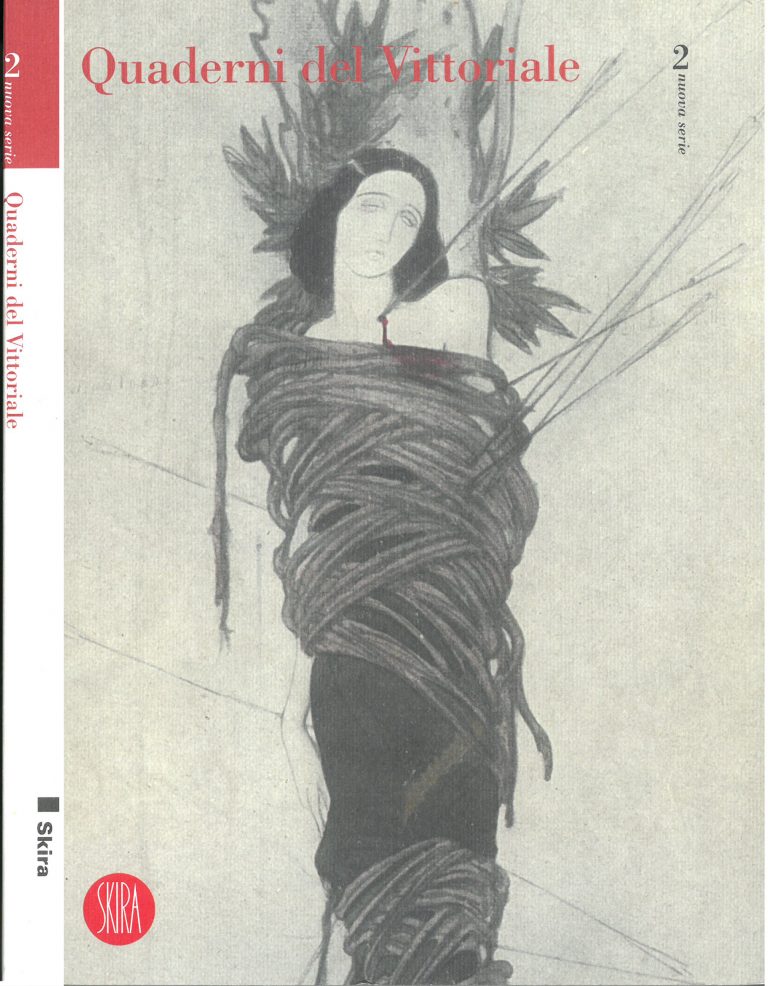Quaderni del Vittoriale. Nuova serie, n. 2

Abstract
“Quaderni del Vittoriale”. Nuova serie n.2
Studi e letture / Studies and readings
«Un poème bleu noir où rugit une lionne à deux pieds»: le musiche di scena per la Phaedre di Gabriele d’Annunzio / «Un poème bleu noir où rugit une lionne à deux pieds»: the musical score for the Phaedre by Gabriele d’Annunzio
Nicola Cattò
Una puntuale introduzione ripercorre le dinamiche che avvicinarono d’Annunzio a Ildebrando Pizzetti, giovane compositore parmense cui il Poeta affida, come primo incarico, la preparazione delle musiche per l’opera della “Nave”. Si sottolineano i caratteri marcatamente innovativi che d’Annunzio desidera introdurre nel teatro, discostandosi dagli schemi del melodramma e coinvolgendo artisti rivoluzionari, tra cui anche Ida Rubinstein e Leon Bakst. Successivamente il saggio affronta l’ultima collaborazione tra il Vate e Pizzetti, ovvero l’accompagnamento musicale della “Phaedre” (1923), illustrando le vicende che si susseguono dalla prima stesura alla messa in scena dell’opera a Parigi. Concludendo l’articolo, l’autore estrapola le singole componenti della partitura e ne propone un’analisi.
A punctual introduction retraces the events that drew together d’Annunzio and Ildebrando Pizzetti, a young composer from Parma who was appointed to set to music the opera “La Nave”. It is underlined how d’Annunzio desired to introduce innovative elements in the theatre and to distance himself from the scheme of the melodrama, involving revolutionary artists such as Ida Rubinstein and Leon Bakst. Further on, the paper confronts the latest collaboration between the Vate and Pizzetti, that is the musical score of the Phaedre (1923), describing what occurred between the draft and the mise-en-scène of the opera in Paris. Concluding his article, the author divides the musical arrangement in individual sections and analyses them.
Inediti e rari / Rares and unpublisheds
Appunti musicali per il “Trionfo della Morte” / Musical notes for the “Trionfo della Morte”
Giorgio Zanetti
Sulla base di autografi dannunziani inediti, il saggio interroga il rapporto della prosa di d’Annunzio con la musica e, in particolare, con l’universo wagneriano, proponendo (alla luce di nuovi riscontri intertestuali con la parigina “Revue Wagnérienne”) una rilettura delle pagine dedicate al “Tristan und Isolde” nel “Trionfo della Morte”.
Proceeding from some unpublished autographed writings of d’Annunzio, the essay confronts the relationship between the Poet’s prose and the music, particularly the universe of Wagner, suggesting (given some new intertextual feedbacks by the Parisian “Revue Wagnèrienne”) a second reading of the pages dedicated to the “Tristan und Isolde” contained in the “Trionfo della Morte”.
Nella “Fabbrica” del Vittoriale / In the Vittoriale’s “Factory”
“Ardisco non ordisco”: una rima del Petrarca invertita / “Ardisco non ordisco”: an inverted rhyme by Petrarca
Rodolfo Signorini
L’autore fa una breve riesamina di alcuni estratti, in cui viene menzionato il celebre motto dannunziano “Ardisco non ordisco” e ci si interroga sulla presunta origine dello stesso. Contrariamente a quanto sostenuto dallo stesso d’Annunzio in una dedica al colonnello Spiller, il detto non ha origine quattrocentesca ma è rintracciabile in una rima del “Canzoniere” di Petrarca.
The author briefly examines some abstracts that mention the well-known motto of d’Annunzio “Ardisco non ordisco” and that wonder about its origins. Contrary to what it’s said by the Poet in a dedication to colonel Spiller, the motto doesn’t date back to the 15th century but it’s traceable in a rhyme of the “Canzoniere” written by Petrarca.
Da Camerino al Vittoriale: venture e sventure di un San Sebastiano ligneo / From Camerino to the Vittoriale: fortune and misfortune of a wooden San Sebastiano
Giuseppe Capriotti
La scultura lignea di “San Sebastiano” conservata al Vittoriale viene analizzata nel saggio affrontandone gli aspetti stilistici e ripercorrendone gli spostamenti che dal Convento monastico di San Domenico la portarono alle stanze del Vittoriale. Viene inoltre avanzata una proposta riguardo l’origine dell’opera, proveniente con probabilità dalla bottega settempedana di Domenico Indivini, che produsse, sul finire del Quattrocento, diversi gruppi scultorei i cui dettagli sono comparabili a quelli presenti nel “San Sebastiano” qui trattato. In chiusura, l’articolo riporta un regesto della corrispondenza dannunziana riguardante il manufatto ligneo.
The wooden sculpture of “San Sebastiano” ubicated at the Vittoriale is analysed in the paper considering its stylistic perspective and retracing its movements from the monastic convent of San Domenico to the rooms of the Vittoriale. It is also proposed a theory on the origin of the opera, presumably belonging to the atelier of Domenico Indivini in San Severino Marche. At the end of the 15th century, Indivini’s studio realised various sculpted groups, whose details are comparable to the ones of the “San Sebastiano” presented here. At the conclusion of the paper, it is reported the Poet’s correspondence regarding the wooden manufact.
I convegni, le mostre, i cataloghi / The conferences, the exhibitions, the catalogues
Michela Rizzieri and Roberta Valbusa
Si propone un elenco degli eventi realizzati con il contributo del Vittoriale e dedicati a svariate tematiche del panorama dannunziano.
It is here reported a list of the events realised with the contribution of the Vittoriale, regarding various contents of d’Annunzio’s landscape.